Web applications - intro
Content:
- Introduction
- Classification
- History
- Examples
Introduction:
Web applications are one of the most important application type, so it is obviously
relevant to know about web applications.
Classification:
Let us start with a classification of web application frameworks.
The reality:
By definition all web applications really work like:
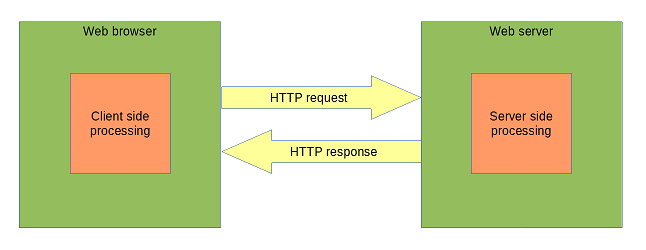
But not all web application frameworks has a logical model that matches this.
Component style:
A component style web application framework encapsulates everything related to
browser versus server, the HTTP protocol etc. and present the combined client
and server side as a single application.
A component style web application framework basically tries to make web applications
look just like desktop application.
The building block of such a framework is some abstract components with some
functionality but not splitting it in client side and server side functionality.
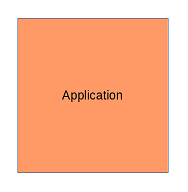
Well known component style web application frameworks are:
- ASP.NET Web Forms (.NET)
- ASP.NET Core Blazor (.NET)
- JSF (Java)
- Tapestry (Java)
- Wicket (Java)
- Vaadin (Java)
Traditional style:
A traditional style web application framework does not hide the real nature
of a web application.
A traditional style web application framework operates with HTML and HTTP.
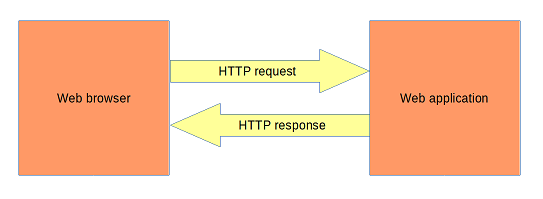
The largest group of traditional style web application frameworks are MVC
web application frameworks.
For more info on MVC architecture read here.
In practice MVC take different forms.
Multiple controller classes forwarding to views:
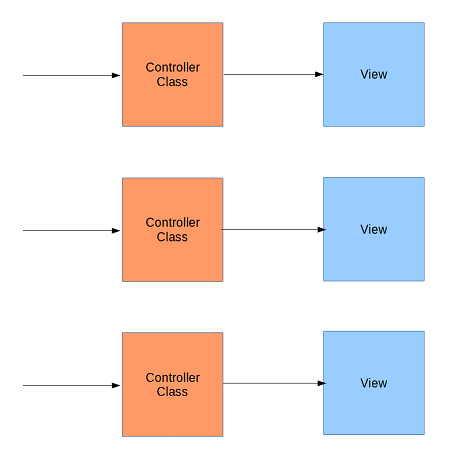
Generic controller class dispatching to multiple action classes forwarding to views:
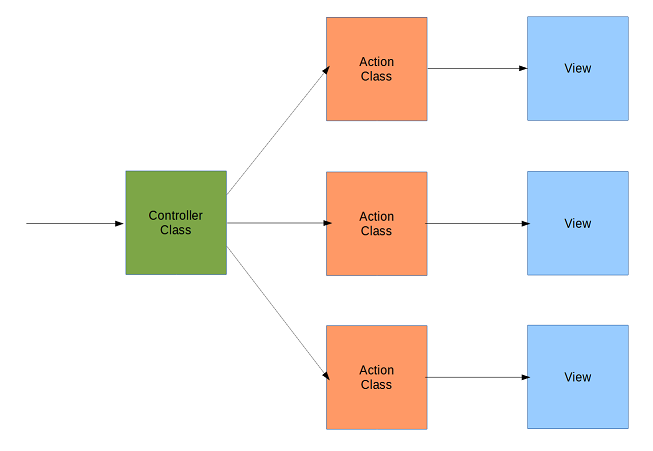
Multiple controller classes each with multiple action methods forwarding to views:
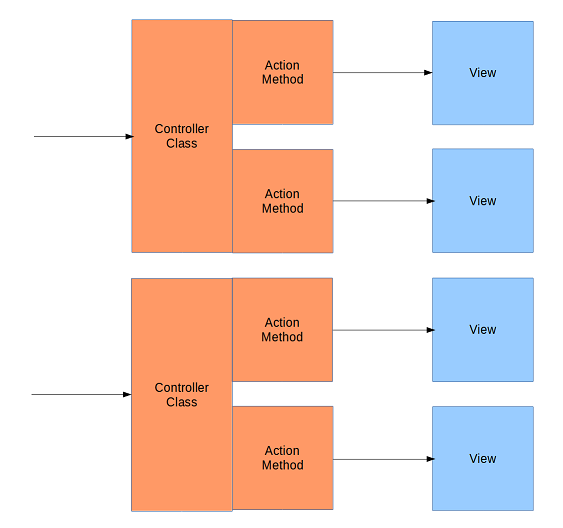
Generic front controller dispatching to multiple controller classes each with multiple action methods forwarding to views:
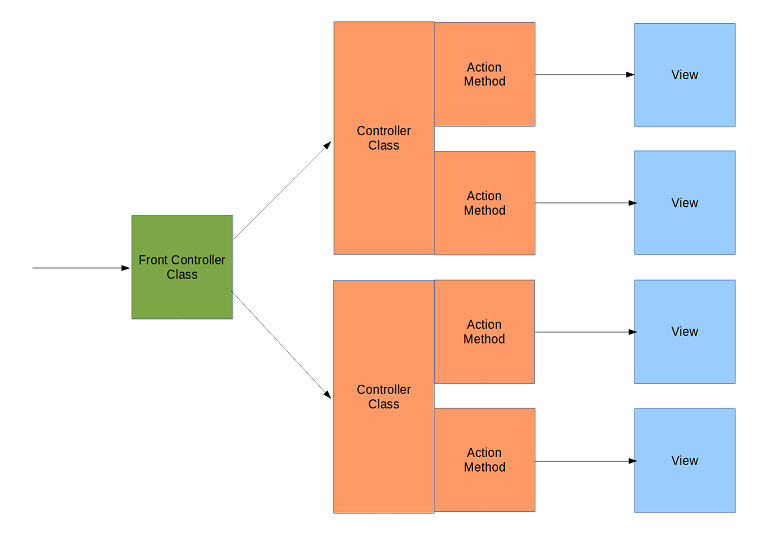
Well known MVC web application frameworks are:
- Struts 1.x (Java)
- Struts 2.x (Java)
- Stripes (Java)
- Spring MVC (Java)
- ASP.NET MVC / ASP.NET Core MVC (.NET)
- Play (Scala)
- Zend/Laminas (PHP)
- Symfony (PHP)
- CodeIgniter (PHP)
- CakePHP (PHP)
- Laravel (PHP)
- Django (Python)
- Ruby on Rails (Ruby)
- Grails (Groovy)
Client/server style:
A client/server style web application framework considers client side and
server side two completely separate applications. The interface between them
is a well-defined API typical RESTful web service using JSON/HTTP.
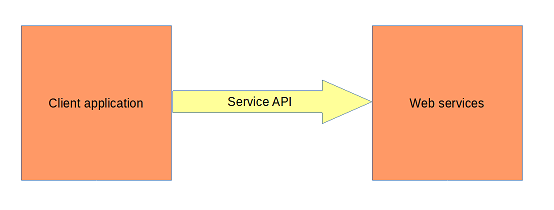
Server side is just regular web services.
Well known web service frameworks are:
- JAX-RS (Java)
- Spring MVC (Java)
- WCF (.NET)
- ASP.NET Web API / ASP.NET MVC (.NET)
- Limonade (PHP)
- Slim (PHP)
Client side can be either HTML5 based or plugin based.
HTML5 does not really mean HTML version 5 but just the combination of HTML, CSS and JavaScript.
HTML5 client apps use browser render engine and browser JavaScript engine.
HTML5 has become extremely popular today and several advanced JavaScript frameworks
has been created to support this.
Well known JavaScript frameworks include:
Plugins use a browser plugin. That browser plugin get a rectangle on the screen
from the browser and then the plugin manage that entirely.
Well known plugins are Java Applet, Adobe Flex and Microsoft SilverLight.
All the old plugin technologies are effectively dead and not supported by
current browsers.
Note that maybe - just maybe - web assembly can revive plugins as technology.
History:
Evolution of Java web application frameworks:
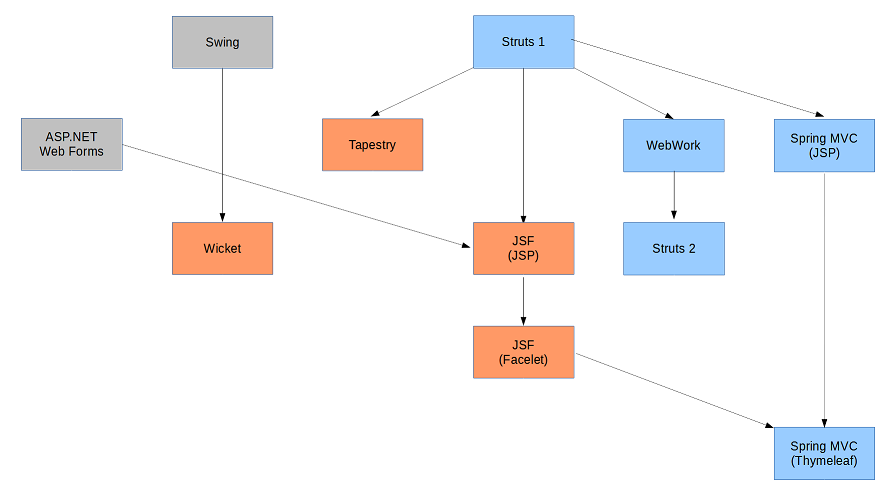
Evolution of .NET web application frameworks:
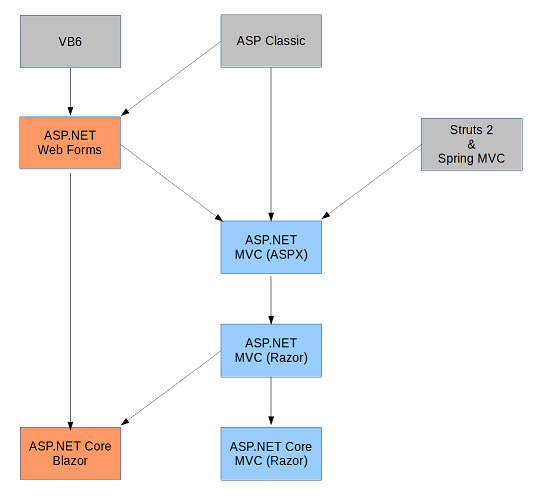
Examples:
Now time to show some examples.
All the examples will provide the same functionality:
- Show a table with 3 columns F1, F2 and F3 retrieved from emulated database
- Have a form with two text input fields, one select field and one submit button to add a row to the emulated database
This is obviously not a realistic web application, but it is enough to show how the
different technologies work.
Also:
- no input data validation
- no error handling
- no internationalization
And very primitive HTML with no CSS and no JavaScript (written by me).
So both client side and server side would be more complex for a real world web
application. But the purpose is to illustrate how various web application frameworks
work not creating a real world web application.
Disclaimer: I have never used most of these frameworks, so even though I have tested that the
code is working, then I cannot guarantee that the code is good code aka following
idioms and best practices for the particular framework.
Examples:
- Component style:
- Traditional style:
- Client/server style:
- Server side:
- Client side:
- Mostly outside my area of expertise
- Historic (not relevant for new web applications):
Note that these articles are only overviews intended to provide a high level
understanding of the technologies - they are not detailed enough to be considered
tutorials. Anyone wanting to learn these technologies well enough to understand
all their capabilities and create web applications using them will need much more
in depth material.
Article history:
| Version |
Date |
Description |
| 1.0 |
December 3rd 2022 |
Initial version |
Other articles:
See list of all articles here
Comments:
Please send comments to Arne Vajhøj









